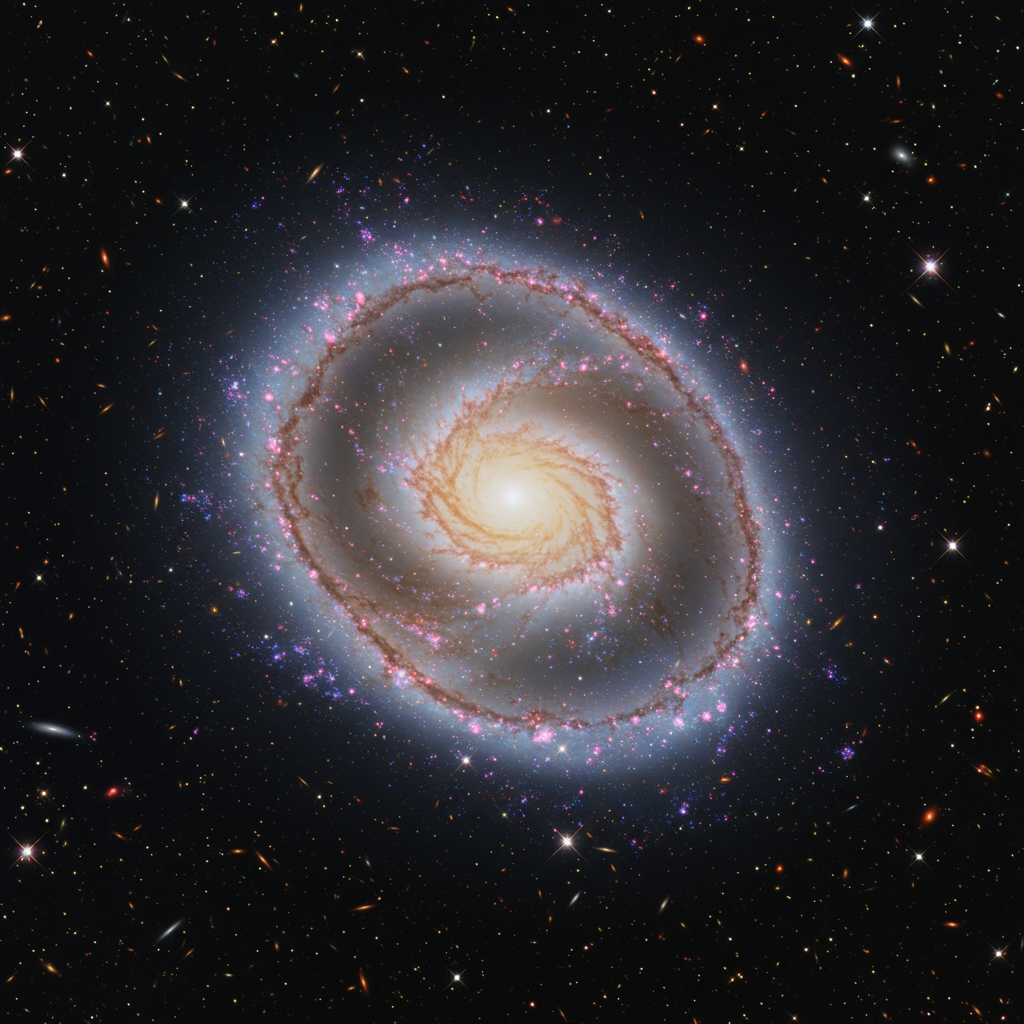Astronomers are celebrating the release of a spectacular new image showcasing the Sculptor galaxy in breathtaking detail and a stunning array of colors. This panoramic view, captured by the European Southern Observatory’s (ESO) Very Large Telescope (VLT) in Chile, offers an unprecedented look at this nearby spiral galaxy, officially known as NGC 253.
The image is so incredibly detailed that it’s already being used as a sophisticated map of the galaxy, revealing stars, gas, and dust with remarkable clarity across a vast expanse.
About the Sculptor Galaxy (NGC 253)
Located approximately 11 million light-years away in the Southern Hemisphere constellation Sculptor, NGC 253 is a prominent example of a spiral galaxy. It’s also categorized as a starburst galaxy, indicating a phase of intense star formation activity happening within its boundaries.
Due to its relative proximity, the Sculptor galaxy holds a special place for astronomers. As Enrico Congiu of the ESO, who led the research associated with these observations, explained, it’s situated in a “sweet spot.” This means “It is close enough that we can resolve its internal structure and study its building blocks with incredible detail, but at the same time, big enough that we can still see it as a whole system.”
Capturing the Cosmic Panorama
Creating this highly detailed image required significant observational effort. Using the MUSE instrument on ESO’s Very Large Telescope, astronomers observed the Sculptor galaxy for around 50 hours. This extensive observation time allowed them to capture more than 100 individual exposures, which were then meticulously stitched together to form the final, seamless panoramic picture.
The resulting image impressively spans 65,000 light-years, covering almost the galaxy’s entire diameter. To put that into perspective, a single light-year is equal to about 5.8 trillion miles.
The Value of a ‘Thousand-Color Image’
One of the most striking features of the new Sculptor galaxy image is its extraordinary color depth. Described as a “thousand-color image,” it displays a rich spectrum of hues – a glowing montage of purples, pinks, yellows, and more – far beyond the handful typically seen in traditional astronomical pictures.
Scientists emphasize that these thousands of colors are more than just visually appealing. They provide crucial data, serving as vital clues about the age, chemical composition, and motion of the stars, gas, and dust found throughout the galaxy. Analyzing this complex color information allows researchers to gain deeper insights into the galaxy’s dynamic processes and evolution.
New Discoveries within Sculptor
The detailed observations facilitated by the VLT image are already yielding exciting scientific findings. Researchers have identified 500 planetary nebulae within NGC 253. These are clouds of gas and dust expelled by dying stars. In astronomy, planetary nebulae are incredibly useful; they act as “cosmic mile markers,” helping scientists measure distances and map the galaxy’s internal structure.
The research leveraging this detailed imaging has been accepted for publication in the prestigious journal Astronomy & Astrophysics, underscoring the scientific significance of this new view of the Sculptor galaxy. This detailed snapshot promises to be a valuable resource for astronomers studying star formation, galactic structure, and evolution for years to come.




